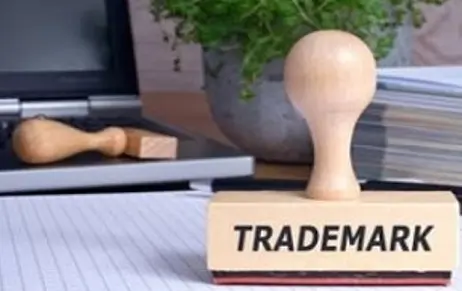A trademark’s degree of registrability or its ability to sustain a suit or enforce a…
Trademarks and Metaverse
TRADEMARK
A trademark is something that we encounter on a regular basis. It is the name given to a product or service. It is an indication of a trade organization’s or company’s quality and goodwill. A trademark allows a buyer to differentiate a certain commodity from other comparable goods on the market and to identify goods created by a specific producer. It involves the form of the product, its packaging, and the color combination. A trademark is a key notion in the idea of Intellectual Property Rights (IPR).
A trademark is defined in Section 2(1) (b) of the Trademarks Act, 1999, with the primary goal of preventing infringement and affording remedies to trademark owners in the event of infringement.
METAVERSE
The metaverse is a technology that allows us to experience another reality. In other words, the metaverse is a virtual environment where anybody may establish a virtual person, brand, or anything else. Because of the current epidemic and a significant change to online mode, this technology quickened its pace and spread in almost every business and society. Gaming, fashion, and luxury brand enterprises, in particular, are becoming the metaverse’s primary venues for expanding its consumer base.
Protecting brands in the metaverse will be crucial for brand owners, and preparing to play in the new meta sandbox will necessitate a legal plan.
“A trademark might be a phrase, word, symbol, gadget, or even a color. Anything that distinguishes your party’s or company’s items from others qualifies. However, in order to be legally protected, the object must be utilized in a commercial environment. Technologies, in the same way, can be trademarked. One of the technologies that has gained traction during this epidemic period is metaverse.”
TRADEMARKS IN METAVERSE
The NFT (Non- fungible token), which is required for the acquisition of virtual assets in the metaverse, represents the products in the metaverse. These virtual representations, it appears, should be classified as computer software capable of portraying those things in a digital environment. To facilitate this endeavor, large corporations are filing new trademark registrations in an effort to adapt their rights to the new digital era.
[Image Sources: Shutterstock]

Hermès Birkin
The luxury company Hermès and its infamous bag, the “Hermès Birkin”, are one case that has recently attracted notice. A French business recently sued American artist Mason Rothschild for producing and marketing 100 NFTs in the Metaverse that were eerily resemblant of the iconic “Birkin.” Rothschild’s “MetaBirkins” NFTs were very well-liked in the Metaverse and have since been traded for thousands of euros each. Hermès consequently launched a case for trade mark infringement against the artist, stating that he acquired and used the domain name “MetaBirkins.com,” making money and unfairly benefitting from the brand.
The designer claimed that since the NFTs are fictional “Birkins” that are artistic interpretations rather than actual ones, his work cannot be seen as trademark infringement. This scenario serves as an example of the legal ambiguity surrounding the unlawful use of trademarks in NFTs.
McDonald’s
The fact that it is becoming more and more usual for companies to sell their products in the Metaverse, where they can be purchased simultaneously by avatars and actual humans, is another problem with the services offered. One business developing a method to enable food ordered in the Metaverse to be delivered in the real world is McDonald’s. This strategy could lead to legal action, though, if a third party commercializes them without the right holder’s permission. As can be seen here, consumers could be mislead to believe that the commercial precedents for both the physical and digital products are the same.
Nike
Third case is Nike recently sued StockX, a Metaverse marketplace, claiming that StockX had misrepresented its shoes as NFTs. These virtual components perfectly duplicated real-world Nike shoes while still being connected to the physical sample. Customers thus instantaneously obtained the true version of the genuine physical footwear when they bought the NFT. On the buyer’s request, the actual shoes could be obtained in exchange for the NFT.
To entice customers to keep their NFTs rather than trade them in for actual sneakers, StockX offered them specific privileges and benefits. Customers were meant to be able to swap out their physical shoes for NFT shoes at any time, but in that scenario, they would have given up their unique advantages. Since buyers genuinely felt they were buying genuine Nike NFT merchandise, Nike claimed that this technique would deceive them. Nike believed that this strategy would damage its reputation and potentially prevent it from entering the Metaverse since customers might mistake StockX for the official NFT merchant.
In truth, Nike purchased the collectibles company RTFKT in December 2021 as part of their preparations for entering the Metaverse. Additionally, the business upgraded its trademark portfolio by submitting 7 trademark applications to the United States Patent and Trademark Office (USPTO) in order to register its mark for digital shoes and apparel. It will be fascinating to see how the disagreement is resolved since it is still pending.
The previously cited instances draw attention to a fresh issue that well-known firms are facing: the unlawful use of registered trademarks in the Metaverse, specifically as NFTs. Given that adding a trademark would surely increase the value of an NFT, this is a severe problem for right holders. Obviously, this gives well-known reputation brands an unfair advantage. This forces owners of the rights to either create their own NFTs or just keep an eye out for violations and take legal action if necessary.
CONCLUSION
Brands should keep an eye on virtual platforms as part of their online brand protection strategy in order to be aware of any illicit digital applications within the Metaverse. If the Metaverse administrators implement internal rules and standards to deal with illegal behavior, as other online platforms like YouTube and Amazon have done, it will be fascinating to see how quickly illegal digital usage can be stopped.
It will be interesting to observe how these arguments play out in the real world because the Metaverse is still very much in development. Regardless of whether brand owners choose to interact with both the physical and virtual worlds, there is no denying that the Metaverse will have an impact on them.
Author: K Sushrutha Reddy, in case of any queries please contact/write back to us via email to [email protected] or at IIPRD.



